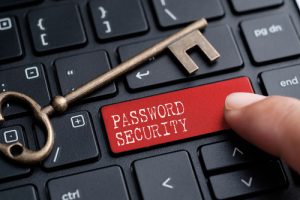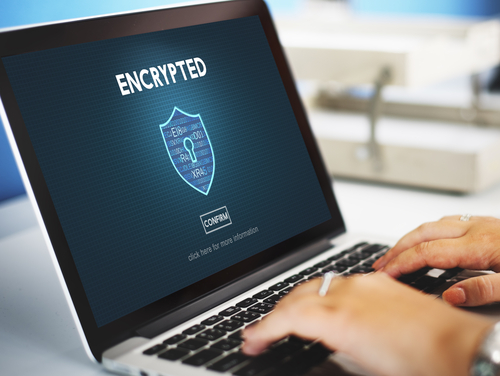In today’s complex business world, protecting private information and maintaining a safe work environment can feel like navigating through an intricate maze.
With new cyber threats emerging every day and security risks lurking around every corner, companies need to take proactive steps to educate their employees on best practices for keeping sensitive data and personnel out of harm’s way.
This can be done through a comprehensive security awareness program that equips all employees, from entry-level to executives, with the knowledge to identify potential vulnerabilities like phishing scams, unauthorized access, and human error.
That’s why we’re exploring the key steps to establish an impactful security awareness program fit for your unique organizational culture and risks.

What Is Workplace Security Awareness?
Workplace security awareness is all about educating employees about cybersecurity. It’s a program to teach everyone in a company, from the front desk staff to the CISO, how to identify and respond to cyber threats like phishing attacks, malware infections, and data breaches.
A security awareness program aims to reduce human error, strengthen cyber defenses, and build a security-focused culture. Through regular training, policies, and awareness efforts, it creates a workforce that is cyber-savvy and committed to protecting sensitive information, systems, and devices from hackers.
Instead of just fixing problems after a data breach or infection, security awareness is proactive. Some things covered in security awareness include password management best practices, recognizing phishing emails and scams, understanding the risks of using apps and social media carelessly and knowing what to do if you encounter ransomware or suspicious online activity.
It also teaches employees to be alert for unauthorized access to networks or top of mind about authentication measures.
Benefits of Having a Workplace Security Awareness Program
Mitigates Security Risks
Security awareness programs help lower an organization’s security risks. By educating all employees, they become better at identifying vulnerabilities hackers might exploit. Staff learn to recognize potential threats like malware, unauthorized access attempts, and human errors that put sensitive data at risk.
By educating all employees, they become better at identifying vulnerabilities hackers might exploit. Staff learn to recognize potential threats like malware, unauthorized access attempts, and human errors that put sensitive data at risk.
When employees are diligent about basics like avoiding suspicious links or files, it makes it much harder for cybercriminals to infiltrate important systems and data through common hacking techniques.
Protects Sensitive Information
Keeping private info safe is really important for any company. But it can be hard with tricky hackers out there. A security program helps by teaching employees to better protect important data. The training teaches employees easy-to-understand rules so they know how to keep private data out of the wrong hands.
Some important things that are covered in these programs are only opening files and apps containing secret information on secure work computers. Employees also learn not to leave sensitive papers lying around where others could see them.
And never to email or text private stuff where hackers could steal it. Employees can also report any strange computer activity immediately before sensitive data is at risk.
Reduces Potential Financial Loss
For many companies, data breaches and hacker attacks can potentially cost a lot of money. Things like ransomware infections that lock important files until a ransom is paid or hackers stealing customer payment details that have to be replaced take money away from running the business.
A security awareness program helps reduce these kinds of potential financial losses. When workers know not to click weird links or open suspicious attachments, malware can’t sneak into computers as easily.
The training also shows workers warning signs for phishing scams. If anybody sees something risky, they are alert and report it immediately. Then, IT experts can jump in before any money is lost to the cybercriminal.
Over time, as everybody learns together, criminals won’t succeed in cyberattacks aiming to cost the business big bucks in damages or paid ransoms.
Builds Trust and Reputation
Customers want to feel confident that their personal information, like credit cards or health records, is well protected. A strong security awareness program can help companies build trust and a positive reputation.
When employees complete training on topics like password safety, avoiding phishing scams, and keeping devices secure, it shows customers the workforce is well-prepared to safeguard private details.
If awareness programs are taken seriously, they minimize risks of costly data breaches or disruptive cyberattacks from occurring. Having no major online incidents creates peace of mind for clients and reassures them sensitive files stay shielded.
Customers feel comfortable sharing important records, while new recruits believe their personal information will be in reliable hands
Prepares for Evolving Threats
Bad guys online are always thinking of new tricks to hurt computers or steal private info. That means companies have to keep learning, too. A security program helps prepare for changing hacker schemes, as workers take regular refresher courses to learn about the newest kinds of scams and cyberattacks.
They might cover advanced phishing emails disguised as official notices, or tricky malware hiding in links shared on social media. This helps people spot new threat tricks before crooks can use them successfully.
Staff also learn updated guidelines, like keeping video call backgrounds private when working remotely. With cyber risks constantly changing, ongoing security awareness ensures everyone’s skills and knowledge are evolving alongside emerging hacker techniques.
Who Would A Security Awareness Program Benefit?
Everyone in an organization should receive security awareness training. From the CEO down to the front desk staff, a companywide effort is needed to truly cultivate a strong security culture. For executives and managers, leadership buy-in is crucial.
They set the tone that cybersecurity is a top priority. CISOs and IT teams then design training for different jobs. People who use computers a lot need to know secure habits, as they handle sensitive data and access internal systems every day.
One slip-up could let hackers steal lots of private info. New hires need cybersecurity onboarding to prevent them from becoming targets of social engineering by hackers during their initial days. Refresher training can also help remind everyone of updated threats over time.
Even those in non-tech roles should understand the risks of unauthorized access or phishing attempts so they don’t put others in danger.
Ways To Establish A Security Awareness Program
Building a security awareness system takes some planning and effort, but it’s worth it to reap all the benefits we covered earlier, like protecting sensitive data, saving money, and keeping workers safe online.
Here are a few different things companies can do to start educating their employees about cybersecurity risks and solutions.
Assess Current Security Risks
Before starting lessons, it’s crucial for companies to take a close look at where their security could be stronger. Management must work with IT pros to analyze what threats may already be trying to sneak into the workplace’s devices and online tools.
They need to check for dangers like weak passwords, missing software updates, viruses, and unauthorized programs. Network entry points should also be examined for vulnerabilities hackers may use.
And staff behaviors that could aid attacks, like lost phones, must also be reviewed. Together, IT and managers can get a clear picture of which risks need addressing through the awareness program.
Develop Clear Security Policies
It’s important for any workplace to decide precisely which security rules everyone must follow to keep data safe. Business leaders must create straightforward policies about passwords, email, internet use, and mobile device care.
The rules must be written in simple language so all staff understand expected behaviors. For example, asking workers to choose complex passwords that are changed regularly and never shared. Or saying private work conversations must happen through approved chat apps only.
With set guidelines, employees learn what is and isn’t allowed when handling sensitive work files and tools during training. With clear policies, managers can also apply consequences for anyone not following procedures.
But the focus is on education. The rules simply create a shared standard to maintain security as a team.
Develop Customized Security Awareness Training Materials
Training needs to feel personal to each workplace for learning to really stick. So security leaders craft lessons just for their employees using examples from their daily jobs. You can make presentations, activities, and articles highlighting important topics utilizing the company’s systems and information.
For example, showing real email templates instead of generic ones or using office jargon where needed for clarity. These custom lessons feel instantly familiar, which helps workers care about protecting their environment.
Managers can also design materials at different readability levels so everyone, from new hires to experienced staff, can understand them. Developing the training specific to their setup ensures employees see cyber risks as a problem that concerns them personally.
Implement Varied Training Delivery Methods
Just like in school, people’s learning styles are different. Some grasp better from listening, others need visual examples, and some prefer practice. It’s important that security lessons happen in various ways to satisfy different brains.
Managers may offer workshops where an instructor talks through slides and has activities like quizzes or games to reinforce retention. Some employees may learn security habits with interactive work, like roleplaying how to handle shady calls or responding safely to fake phishing emails.
Practicing can help them cement their skills. For employees who learn by making or doing, options like building your security posters or developing playful instruction guides can keep them focused.
Implement Regular Training Programs
For security lessons to be effective, refresher courses are needed. Just like keeping skills sharp in sports requires practice over time, staying cyber-savvy demands regular tune-ups, too.
This can be done by scheduling brief lesson sessions every few months so that what staff learned before stays fresh in their minds. You can also use short quizzes to check how much material was retained since the last class.
A quick refresher ensures workers don’t forget important basics if their knowledge starts slipping. Repeating the vital messages reinforces good security habits that become natural in the long run. These regular short trainings also allow you to cover new tricks that hackers invent.
Utilize Simulated Phishing Exercises
One fun way companies test how well training is sticking is by sending fake phishing emails to staff. But it’s just a practice, so no one actually gets in trouble. These mock messages pretend to be from a bank or other company asking for passwords.
When people get the tests, it feels just like a real scam text. This lets the security coaches see who may click dangerous links without realizing it’s a hoax. They can then get one-on-one help learning what to look for.
It can become like a game to staffers. Those who identify the fake email as a drill win points or prizes. Over time, fewer employees fall for the mocks, showing that the training is helping them spot deception better.

Promote Secure Password Practices
Passwords are one of the easiest ways crooks sneak into accounts, so the training must emphasize strong tactics for these crucial gatekeepers. Workers should be taught how to mix uppercase and lowercase numbers and symbols for complex codes that are tougher to crack.
It’s also important that employees create different passwords on all sites, not reusing the same one everywhere. That way, a breach on one site won’t expose you to others. Managers should encourage employees to save passwords privately in encrypted apps or password notebooks instead of sticky notes.
Another best practice that should be taught is regularly changing passwords every few months to keep them from growing stale.
Regular Updates and Communications
For an awareness program to keep helping over a long time, employees need occasional reminders about essential security topics. So, managers must provide refresher info through various channels.
This could be through short articles in weekly newsletters highlighting easy security wins like strong passwords or keeping WiFi private or brief videos during meetings to announce new online threats on the rise that training will address.
There could also be an internal website that makes all security materials available whenever they’re useful. These regular short reminders maintain a culture where cybersecurity remains a shared priority.
Utilize Security Tools
Employees need hands-on practice with programs that protect work devices and accounts to back up their learning. So the training should introduce useful applications everyone can add. This can include anti-virus software that scans PCs and phones for sneaky viruses or malware trying to spread.
Or password managers that let workers save very strong, unique passwords for all logins in an encrypted vault. For those working remotely, VPNs can help cloak online activities from viewing when using public Wi-Fi and keep connections private.
Additionally, privacy settings lock down what private details apps and accounts can access. You can also use tutorials to demonstrate easy setup and use of important tools. Staff can then get to experiment with them on their own hardware.
Leadership Support and Involvement
For staff to take cyber safety training seriously, bosses need to set an example. When top management makes security a clear priority, it filters down through the entire company culture. CEOs and directors can attend lesson sessions to show commitment.
They can also ask thoughtful questions and share mistakes they’ve made to be more relatable. And if finances allow, bosses can visibly invest in premium security tools and services for the workplace. They can also authorize training time and updated materials to continuously strengthen awareness.
Fortify Your Company From Within
Effectively establishing security awareness in the workplace comes down to people. While policies, procedures, and technologies are important defenses, they only work if everyone understands their role and takes responsibility.
So when all employees feel informed and empowered to help guard against threats, we can create a culture where data and people are protected.

